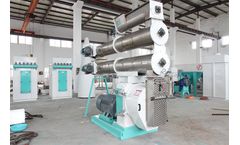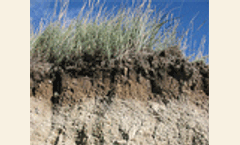Refine by
Corn Grain Articles & Analysis
18 news found
You can find a poultry feed pellet mill to reduce your cost by making your own pellet feed with such a machine using grains like corn powder, wheat, rice husk, wheat straw, vegetables, and so on. ...
“The entire federal grain inspection system needs the certainty, predictability, and transparency that the bipartisan U.S. Grain Standards Reauthorization Act of 2020 provides,” Roberts said. ...
Every year, some Ohio farmers find southern or common rust on their corn plants, but this year both diseases have been more prevalent, said Pierce Paul, an Ohio State University Extension corn and small grain specialist. ...
Waters Corporation (NYSE: WAT) today announced VICAM, a Waters Business, now offers a single extraction method for the detection of aflatoxins and fumonisins in corn and grain. The Afla-V® AQUA™ and Fumo-V® AQUA™ provide quantitative results in only five-minutes (after extraction/sample prep). ...
Grain prices aren’t likely to rise next year thanks to stagnant demand growth and ample grain supplies, says an agricultural economist with the College of Food, Agricultural, and Environmental Sciences at The Ohio State University. ...
” For growers looking for a way to extend their forage supplies, grazing corn residue may be one less-expensive option, he said. “For some folks that may be scrambling for alternatives, such as buying extra hay or feeding more grain to their livestock, grazing corn residue is a good option,” he said. ...
Luca Remmert's dream of running a self-sustainable farm is within sight. He produces energy from corn and grain near the northern Italian city of Turin and hopes in the not too distant future to run all of his eight tractors on methane generated at the farm. ...
Furthermore, producers need to be aware that crops like corn, sorghum, small grains and sudangrass are more likely to accumulate nitrates. ...
Furthermore, producers need to be aware that crops like corn, sorghum, small grains and sudangrass are more likely to accumulate nitrates. ...
The webinar is part of a series of agronomic workshops taught by OSU Extension professionals designed to offer the latest information on corn, soybean and wheat production, LaBarge said. OSU Extension is the outreach arm of the college. ...
“After the combine goes through the field, the residue that is left includes the stalk, husks, leaves, corn kernels and cobs,” he said. “Studies have shown there can be about a bushel of corn grain per acre that could be out there on these fields. ...
Forages that are prone to spoilage include drier haylage, corn and cereal silage, high-moisture corn and cereal grains, baleage and baled hay. ...
Intended as a cutter/cracker for corn and other grains, spices, roots and related food products, the unit is equipped with a machined, one-piece rotor assembly containing five, adjustable, rotating knives that cut against four, reversible, screen-mounted stationary knives. ...
One way to possibly minimize these losses may be to add more carbon to nitrogen-rich residues, such as those of cereal grain crops, during cover crop phase of the cropping systems. A research study conducted by Anna Starovoytov at Penn State evaluated the potential for straw residue to retain legume-derived nitrogen in a corn cropping system. ...
At 2006–2009 costs and yields from literature, none would be more profitable than the corn-based systems. Comparative breakeven price analysis identifies the cellulosic feedstock price that would make crops equally profitable with continuous corn. ...
In Colorado, it was best to use 80 percent of the water for corn’s critical flowering and grain filling stages. Other tactics for putting limited water to best use are to irrigate only part of a field, skip the pre-plant irrigation for corn, delay irrigating until up to half of the soil water is depleted, and wet soil to no more than 70 percent ...
Scientists at the Metropolitan Water Reclamation District of Greater Chicago (District) investigated the effects of continuous and long-term application of biosolids on the levels of dioxins in soil and corn tissues collected from the District’s long-term field plots that were established in 1973. Specifically, they collected soil, corn grain, ...
This $2 million award with over $1 million in matching funds is addressing the value of sustainable removal of the “excess” feedstock to the farmers and potential processors across the supply chain using innovative methods for corn grain and stover collection, wet storage of stover, and rail transport from collection sites to supply a large biorefinery for the ...









